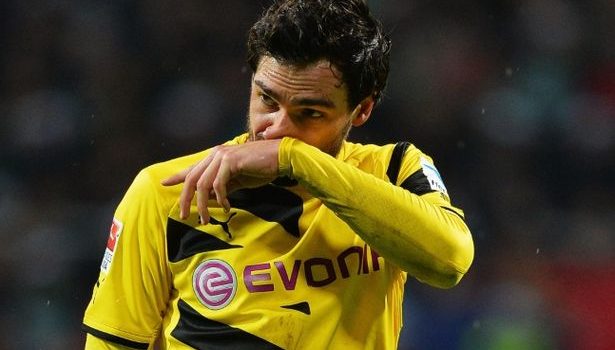At the beginning of the season, it was no secret that it would be difficult for Dortmund to fill the Lewandowski shaped hole left by the Polish striker’s departure to the mighty Bavarians. However, predicting that the Black and Yellows would be second from bottom in the table languishing in the relegation zone was beyond comprehension.
No one would’ve thought that the 2012 German champions and 2013 Champions league finalists would be joint bottom at the end of matchday 17 having lost 10 league matches already; 5 of them in succession.
But how did that come to be? What are the main reasons behind the poor form of Jurgen Klopp’s side?
1) Injuries to key players
This has been a problem since December of last season and hasn’t gotten any better this time around. The injuries last season were so awful that Klopp was forced to convince Manuel Friedrich out of retirement. This season Klopp had better squad depth than last year’s and wasn’t obliged to make desperate decisions. That being said he didn’t have the opportunity to use his best 11 at a time either. And this is without mentioning the series set of injuries the key player Marco Reus had to endure, who at one time recovers sooner than expected and sustains an injury almost as instantly as has happened in the match against Paderborn.
In spite of having other creative players among the mix, the side never looked the same without the 25 year old German superstar. Also, the recurrent injury to captain Matts Hummels also left the side without a leader in defense and this was clearly seen in the majority of the side’s defeats.
2) Poor Finishing
Lewandowski was the story behind most of the trophies Dortmund won in the last couple of years. Extremely reliable in front of goal and never hesitating to shine in the big matches, he scored over 100 goals for his side in his short tenure of four years at the Signal Iduna forever remaining in the hearts of the Dortmund faithful.
The arrivals of last year’s Serie A top scorer Ciro Immobile and Hertha Berlin’s Adrian Ramos were thought to have enough ability to ease the burden of matching the Polish star’s amazing record. But that hasn’t really been the case so far. The new strikers only managed to find the net a couple of times and weren’t there to deliver when the side really needed them.
3) Predictability
The last problem, among a few others, that might be raised from this woeful season is predictability. The so called ‘full-throttle’ football has been around for a couple of years now and despite enabling Dortmund to dominate matches and shock some of the big names in Europe it has become well known by most of the sides in the Bundesliga.
The game plan requires a lot of energy and pace and the longer the game goes on the less intense the pressing and the more the weariness, especially if the side who is pressing hasn’t scored within those dominant stages of the game the opposition can salvage something at some point and this happened more than once this season to BVB.
Also, the high line defending has been exposing the team to quick counters making them suffer from goals scored against the run of play.
Conclusion
So can Dortmund save their season? It’s a possibility. If they can get their key players fit for a good part of the season, if they can find the net more often than not and if they can come up with a plan B for their tactical problems, then the whole poor half of the season will all be forgotten in May.
Written by Brook Genene
Follow Brook on Twitter @brookbvb
Like O-Posts on Facebook
You can also follow O-Posts on Twitter @OPosts

